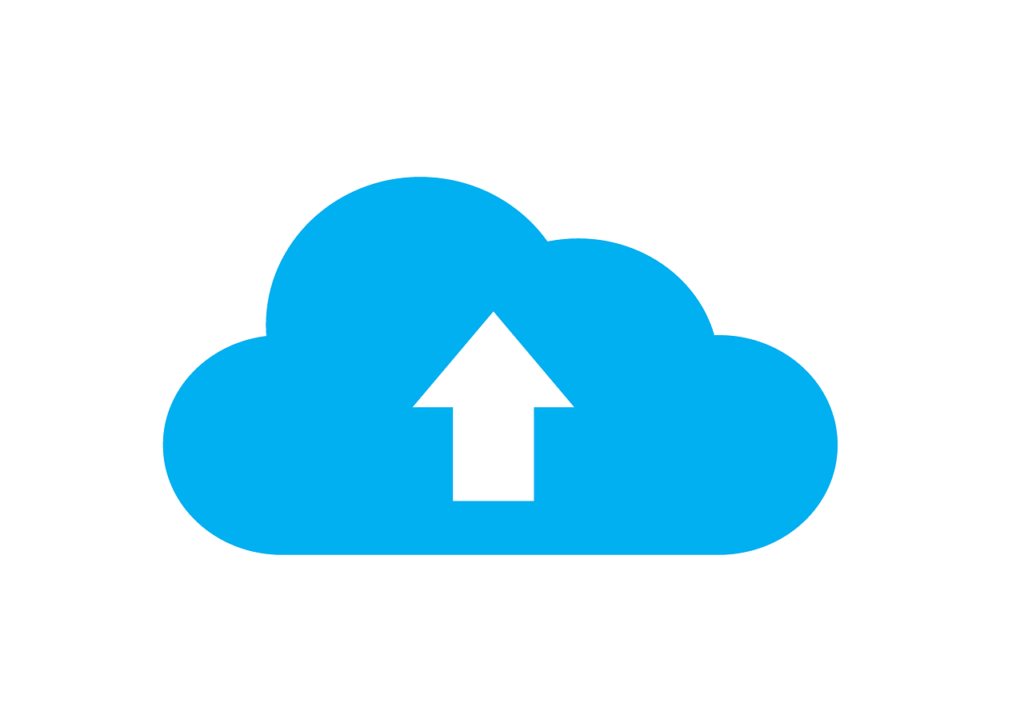Amazon, a Global Phenomenon!
Amazon has become a household name. Jeff Bezos, the owner of Amazon, could not have possibly imagined how big his company would become when he started it from his garage in 1994.
Amazon has transformed the shopping culture of the modern world. If you are not buying or selling through Amazon, you are living your life wrong. Of course, the company has not expanded its services to some countries, but with its aggressive expansionary policies, it is likely that Amazon will become a global marketplace in only a few years.
The Advantages of Selling on Amazon
As mentioned earlier, Amazon provides sellers access to an international market. It expands manifold the number of potential customers for a business while also providing safe shipping services using its FBA and other services (we will explore that in detail later). Still, there are several other amazing advantages that Amazon has to offer to sellers. Here’s a quick rundown:
- Marketing Costs are Low: sellers can use listing techniques to make their product stand out. Amazon attracts millions of shoppers, which otherwise businesses would have to attract using expensive marketing techniques.
- You Need Not Keep Stock: using Fulfilled by Amazon (FBA) services, sellers can store and ship their products cheaply without the hassle of packaging and maintenance.
- Credibility: products listed on Amazon are generally considered reliable. Customers are more likely to buy a product from Amazon than a store that they have never heard of.
- Stable Software and Maintenance Services: Amazon has an easy-to-use software that is backed up into a cloud network which, in turn, is consistently maintained. The website allows you to make complicated purchases and returns tracking, communication in real-time, and bank transfer processing with just a click of a button.
In a nutshell, sellers must become part of the Amazon marketplace immediately. And this blog will do exactly that. I have compiled the perfect guide for sellers with steps that they should take to take their business global.
So, stick around if you want to be a seller at Amazon. You and I are in for the beginning of a wonderful journey.
How to Become a Seller on Amazon?
In order to become a seller on Amazon, you must complete eight steps. Here is a rundown of all of them:
- Creating a Seller Account.
- Establish your Brand using Amazon Brand Registry
- Create Store and Choose Template
- Design Different Elements of your Store Page
- Use Content Tiles
- Take Pictures of your Product According to the Amazon Standards
- Upload your Product
- Review and Publish
1. Creating a Seller Account
Amazon provides two seller account plans: individual and professional. The individual plan costs $0.99 per product sold. This plan is usually adopted by people who are exploring the business world and are unsure of what they want to sell.
For seasoned sellers, a professional seller account is recommended. Under this plan, Amazon charges $39.99 a month, regardless of how many products you sell. It also provides business analytics tools that track the statistics of your store, for example, the number of visitors that come to your store or where your product ranks amongst competitors, etc.
A professional Amazon seller account usually takes more than a month to be approved. Therefore, I recommend that you make the account as soon as possible. To help with the hassle, here’s a list of things that you should have in order to quickly make the account:
Primary Contact Information
- Primary email address (use a non-personal email ID)
- Primary phone number
- The permanent address of your firm
Identity Verification Documents of the Seller
- Copy of passport
- Government-issued driving license
- National identity card
- Bank account statement verifying the existence of seller’s bank account
Company Verification Documents
- Name of the company as it appears on its bank account
- License(s) of your business
- Business structure
- The place where your business has been registered
- For Americans only, sellers must have their federal tax identification number.
- Any beneficiary, directly or indirectly, owning 25% or more of the company’s shares must provide their personal information (name, DOB, bank account, etc.)
- UPCs/EAN codes
Seller Financial Documents
- Credit Card Information (Both Visa and Mastercard will do as long as the credit limit per month exceeds $39.99)
- For direct sales deposit, a U.S. bank account number will be required
For Amazon Europe
- In addition to the aforementioned things, a seller in Europe needs to provide any utility bills from the last 90 days, such as electricity, water, gas, and cable bills.
- A scanned copy of the seller’s residential booklet
You can use this link: https://sell.amazon.com/beginners-guide to learn more about seller accounts and/or sign up for Amazon’s services.
2. Establish your Brand using Amazon Brand Registry
The Amazon Brand Registry (ABR) is a special feature reserved for brands. It separates original sellers from resellers. The ABR allows sellers to create an identity for their products amongst the millions of other products available on Amazon. It helps differentiate a business, providing it tools that give it credibility while also protecting the business from external threats.
For instance, ABR provides sellers with protection from copyright infringement using its gated product feature. The ABR also provides essential marketing tools such as Brand Analytics that create more opportunities for effective advertising.
The ABR also helps sellers through the provision of lifestyle images that can be used at the online Amazon storefront of the business. It also issues useful messaging advice for brands that can give sellers an edge amongst stiff competition.
Most of all, the Amazon Brand Registry allows sellers to create a storefront on the Amazon Store Page. This is essential for the growth of any budding business and easily the most important feature for sellers.
We’ll talk about the Amazon store in more detail. For now, let us focus on what you will need for ABR.
- You will need a unique Brand name. This must already be registered with the U.S. Patent and Trademark Office or any other similar institution.
- Your Brand’s serial number must also be registered with the aforementioned office(s).
- You must list all the countries where the product is currently being sold under the specified Brand name.
- You will need product images with labels.
- The labels must include your brand name and logo (if applicable).
3. Create Store and Choose Template

After brand registration is complete and your application is approved, you can begin doing the fun stuff, that is, creating and designing your very own Amazon store.
In order to create a store for your Brand, go to ‘Manage Stores” at the Seller Center. Here you will get the option for choosing the Brand for which you want to create the store. After selecting the Brand, Amazon will provide you with pre-designed templates that you can use. While these pre-designed templates are fairly good and are made by experts, you can always design your own custom template.
You can customize the template by using the drag and drop options next to text bubbles, video bubbles, etc. and place them in ways that you find most attractive. There is no right or wrong way of template customization. We recommend that you do whatever pleases you as long as your Brand’s identity, i.e., its name, what it stands for, its mission/vision, what makes its products different, a snippet of its products, and the people behind the Brand, etc., are displayed prominently. You can use pictures, animations, and small videos to get such messages across. This is necessary for establishing credibility at a glance.
4. Design Different Elements of your Store Page
Design Design Design! That is the name of the Amazon store game. The better you design your store page, the more traffic it will generate. Customers are also likely to trust brands that have the most ergonomic and artistic pages.
User experience is key. Through all processes of the design phase, make sure that navigation is easy. Make sure that colors are contrasting and are in line with the brand image. Customers should not have any problems moving to and fro amongst pages, categories, or filters, etc.
The structure of your store page should value smoothness and efficiency. Before cluttering your store with products, make a sound outline that differentiates between the homepage, content slides, product page, FAQ page, etc. An emphasis on hierarchy should be maintained, with buttons for different pages being prominently outlined according to their importance. For instance, it is customary to put the “contact us” page option at the bottom of every page.
One recommendation I would suggest to new sellers is to view Amazon store pages of successful businesses in the same market and understand what their page does to attract traffic. You can use their features and adapt them in ways that suit your brand store. As Bear Grylls said, “Improvise, Adapt, Overcome.”
If you are still confused, I have compiled three different design styles that sellers have found successful for their Amazon stores:

- Product Highlight: In this design style, a “hero” image is used that takes up most of the space on the page and prominently highlights the main product of your Brand. New attractive offers can be displayed using the product highlight template. The biggest advantage of this template is that it really catches the user’s eye. Using bright colors, imagery, and video, the showcase template has become a staple for a brand’s homepage on the Amazon store.
- Product Grid: In this design style, products are displayed in a grid layout spanning the entire page. It shows a high number of products and allows users to go through all of them at a glance. Product grids are most effective for brands seeking customers who are sure about the product they want to purchase. For instance, a pillow company can create a product grid containing all its memory foam pillows. The company knows that all users who make it to their page are interested in memory foam pillows. Therefore, it makes sense to show customers all their memory foam products on this very page, allowing customers to compare and choose the pillow that they like most.
- Marquee: In this design style, a number of key products are displayed, along with a short description. Some brands also add positive reviews about the product that they have had over the years. These reviews may include 5-star ratings or even comments from happy customers. It is common for brands to use a marquee template on category pages, employing descriptions to highlight the specificities of each category.
5. Use Content Tiles
One of the best features about an Amazon store and its software is the ability to use different content tiles. Content tiles are merely blocks on your store that you can edit and customize to show videos, galleries, images, product descriptions, product titles, and customer reviews. Their ease of use allows even non-professionals to create stunning web layouts. The only limit is your imagination.
Content tiles on Amazon stores include hero pictures, navigation bars, company logos, product grids, picture tiles, text tiles, both picture, and text tiles, etc. Brands can use these to create a user experience that is smooth and creates no room for confusion. I recommend new users test out different content tiles and see what fits their vision for their Brand the most.
6. Take Pictures of your Product According to the Amazon Standards
The Amazon standard for product pictures dictates that each image must at least be 500 x 500 pixels. However, the recommended pixel requirement is 1000 x 1000, which showcases a higher quality image. In addition, the image of the product must be taken against a plain white background. The product should also take at least 80% of the image space.
In order to stand out and/or maintain competitiveness, brands must ensure that their images follow these aforementioned standards. Higher quality images where the product is in the limelight are a surefire way of attracting more customers.
7. Upload your Product(s)

Congratulations, you are almost near the end. Now is the time to upload all your products onto the Brand’s Amazon store. Products are uploaded into the Amazon store using the Amazon Standard Identification Number (ASIN). Every product is assigned a unique ASIN which is then used to identify the product. You may use ASINs to promote your products on the global Amazon market.
8. Review and Publish
Finally, it is time to publish and go live with your immaculately designed store. But one last check is important. Make sure that there are no grammatical errors on the website. Go through all content tiles and see that they are in the place where they are supposed to be. You may use Amazon’s Store Preview feature to look at the store from the perspective of a customer. When doing so, make sure that the user experience is not confusing.
A useful trick is to ask your family or friends to thoroughly go through your store and ask them about their experience. Some good questions may include asking them if they were confused at any time during navigation, or if particular colors distracted them from a product, etc. Your last check should ensure that the store highlights the vision of your Brand.
After these checks, you may submit the store to Amazon for review. It usually takes up to a month for your store to be approved by Amazon.
The Takeaway
Amazon store creation is not a very complicated process. Anyone can make an Amazon store as long as they have their credential with them. But not every seller finds success on Amazon.
Amazon caters to a global market of millions of sellers. In order to gain an edge in this global market, brands must have more than an attractive store page. Sellers must have the best quality product which they can sell for a competitive price. In order to do so, these sellers must be in contact with top-quality suppliers.
This is where we come in. We, at Mobius, make the highest quality pillows in China. Combine that with our range of products (from travel series to mother and baby series); we are the perfect suppliers for your budding pillow brand.
Please feel free to contact us on our website for further details. We are here to take your pillow brand to exciting new heights!



